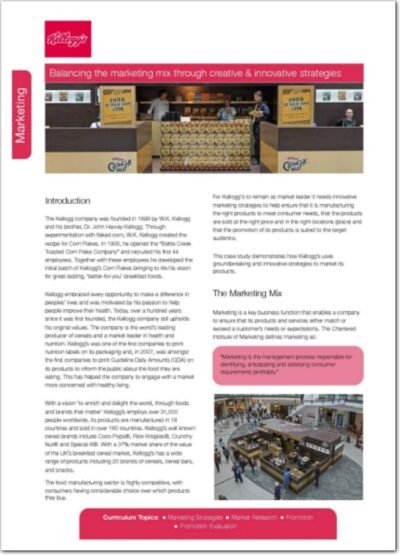Influencer marketing has emerged as a pivotal strategy for brands seeking to engage with their target audiences in a more authentic and relatable manner. At its core, the return on investment (ROI) in influencer marketing refers to the measurable benefits that a brand gains from its investment in influencer partnerships. This encompasses not only direct financial returns but also intangible benefits such as brand awareness, customer loyalty, and enhanced brand perception.
The unique nature of influencer marketing lies in its ability to leverage the trust and credibility that influencers have cultivated with their followers, thereby creating a more organic connection between the brand and potential customers. To fully grasp the concept of influencer marketing ROI, it is essential to consider the various dimensions that contribute to it. Unlike traditional advertising, where success is often measured solely by sales figures, influencer marketing requires a more nuanced approach.
Brands must evaluate how influencer collaborations impact various metrics, including engagement rates, reach, and conversion rates. This multifaceted perspective allows marketers to appreciate the broader implications of their campaigns, recognising that the value derived from influencer partnerships extends beyond immediate sales figures and encompasses long-term brand equity.
Summary
- Influencer marketing ROI can be measured through various metrics such as engagement, reach, and conversions.
- Impact of influencer marketing can be measured through brand awareness, website traffic, and sales.
- Calculating ROI for influencer marketing involves comparing the cost of the campaign to the generated revenue or other desired outcomes.
- Factors affecting influencer marketing ROI include the influencer’s relevance, audience demographics, and the quality of the content.
- Best practices for maximising influencer marketing ROI include setting clear goals, choosing the right influencers, and tracking performance consistently.
Measuring the Impact of Influencer Marketing
Measuring the impact of influencer marketing is a complex endeavour that necessitates a combination of quantitative and qualitative metrics. On the quantitative side, brands often track key performance indicators (KPIs) such as impressions, clicks, engagement rates, and conversions. These metrics provide a clear picture of how well an influencer’s content resonates with their audience and how effectively it drives traffic to the brand’s website or social media platforms.
For instance, a campaign that generates a high number of clicks but low conversions may indicate that while the content is engaging, it may not be compelling enough to drive actual purchases. Qualitative metrics also play a crucial role in assessing the impact of influencer marketing. This includes analysing sentiment around the brand as expressed in comments, shares, and overall audience feedback.
Understanding how consumers perceive the brand after an influencer campaign can provide invaluable insights into its effectiveness. For example, if an influencer’s post generates positive discussions about a product or service, it can enhance brand reputation and foster customer loyalty, even if immediate sales are not significantly impacted. Thus, a comprehensive measurement strategy should encompass both quantitative data and qualitative insights to provide a holistic view of an influencer marketing campaign’s impact.
Calculating Return on Investment for Influencer Marketing

Calculating ROI for influencer marketing involves a systematic approach to quantifying the financial returns generated from influencer partnerships relative to the costs incurred. The basic formula for ROI is straightforward: (Net Profit / Cost of Investment) x 100. However, applying this formula in the context of influencer marketing requires careful consideration of what constitutes both net profit and cost.
For instance, costs may include not only the fees paid to influencers but also expenses related to content creation, distribution, and any additional promotional efforts. To illustrate this calculation, consider a hypothetical scenario where a brand collaborates with an influencer for a campaign costing £5,000. If the campaign generates £20,000 in sales directly attributable to the influencer’s promotion, the net profit would be £15,000 (£20,000 – £5,000).
Applying the ROI formula yields an ROI of 300%. However, this calculation can become more intricate when factoring in long-term benefits such as increased brand awareness or customer lifetime value. Brands may choose to adopt a more comprehensive approach by incorporating these elements into their ROI calculations to better reflect the true value of their influencer marketing efforts.
Factors Affecting Influencer Marketing ROI
Several factors can significantly influence the ROI of influencer marketing campaigns. One of the most critical elements is the alignment between the brand and the influencer. When an influencer’s values, audience demographics, and content style resonate with a brand’s identity, the likelihood of achieving a positive ROI increases substantially.
For example, a fitness brand collaborating with a well-known fitness influencer who embodies a healthy lifestyle is more likely to see higher engagement and conversion rates than if they partnered with an influencer whose content does not align with their target audience. Another factor that can affect ROI is the choice of platform used for influencer marketing. Different social media platforms cater to varying demographics and content types; thus, selecting the right platform is essential for maximising reach and engagement.
For instance, Instagram is particularly effective for visually-driven brands, while platforms like TikTok may be more suitable for targeting younger audiences through creative video content. Additionally, the timing of campaigns can also play a role; launching a campaign during peak shopping seasons or aligning with relevant events can enhance visibility and drive higher returns.
Best Practices for Maximising Influencer Marketing ROI
To maximise ROI from influencer marketing campaigns, brands should adhere to several best practices that enhance effectiveness and efficiency. Firstly, establishing clear objectives before launching a campaign is paramount. Whether the goal is to increase brand awareness, drive sales, or foster community engagement, having specific targets allows brands to tailor their strategies accordingly and measure success more accurately.
Secondly, fostering genuine relationships with influencers can lead to more authentic content creation. Brands should seek to collaborate with influencers who genuinely believe in their products or services rather than simply compensating them for promotion. This authenticity resonates with audiences and can lead to higher engagement rates and conversions.
Furthermore, providing influencers with creative freedom while ensuring they understand the brand’s messaging can result in more compelling content that aligns with both parties’ goals.
Case Studies: Successful Influencer Marketing Campaigns with High ROI

Examining successful case studies can provide valuable insights into effective influencer marketing strategies that yield high ROI. One notable example is Daniel Wellington, a watch brand that leveraged Instagram influencers to build its brand presence rapidly. By sending free watches to influencers in exchange for posts featuring their products, Daniel Wellington created a buzz around its offerings without significant upfront costs.
The campaign resulted in millions of dollars in sales within just a few years, demonstrating how strategic partnerships can lead to substantial returns. Another compelling case study is Glossier, a beauty brand that has effectively utilised micro-influencers to drive engagement and sales. By collaborating with everyday beauty enthusiasts rather than just high-profile celebrities, Glossier tapped into authentic recommendations that resonated with its target audience.
This approach not only fostered community engagement but also resulted in impressive sales growth and customer loyalty. These examples underscore the importance of strategic planning and alignment in achieving high ROI through influencer marketing.
Tools and Metrics for Tracking Influencer Marketing ROI
To effectively track ROI from influencer marketing campaigns, brands can leverage various tools and metrics designed for this purpose. Social media analytics platforms such as Hootsuite or Sprout Social provide insights into engagement rates, reach, and audience demographics across different social media channels. These tools enable brands to monitor performance in real-time and adjust their strategies accordingly.
Additionally, dedicated influencer marketing platforms like AspireIQ or Traackr offer comprehensive solutions for managing influencer relationships and measuring campaign effectiveness. These platforms often include features for tracking conversions directly linked to specific influencers through unique discount codes or affiliate links. By utilising these tools, brands can gain deeper insights into their campaigns’ performance and make data-driven decisions to optimise future efforts.
The Future of Influencer Marketing ROI: Trends and Predictions
As the digital landscape continues to evolve, so too will the strategies surrounding influencer marketing ROI. One emerging trend is the increasing importance of authenticity and transparency in influencer partnerships. Consumers are becoming more discerning about sponsored content; thus, brands that prioritise genuine collaborations are likely to see better engagement and trust from their audiences.
Moreover, advancements in technology will play a significant role in shaping the future of influencer marketing ROI measurement. The rise of artificial intelligence and machine learning will enable brands to analyse vast amounts of data more efficiently, providing deeper insights into consumer behaviour and campaign performance. Predictive analytics may also become commonplace, allowing brands to forecast potential ROI based on historical data and trends.
In conclusion, as brands navigate this dynamic landscape, staying attuned to emerging trends and continuously refining their strategies will be essential for maximising ROI from influencer marketing efforts. The interplay between authenticity, technology, and consumer expectations will undoubtedly shape the future of this marketing approach as it continues to mature and evolve.
In a recent article on how profitable a computer hardware business can be, the importance of understanding return on investment (ROI) in influencer marketing is highlighted. By analysing the effectiveness of influencer campaigns and measuring the impact on sales and brand awareness, companies like Dalgety can determine the success of their marketing strategies. Dijust Development also shared their experience in discovering AppsFlyer opportunities and assessing effectiveness, showing the value of data-driven decision-making in influencer marketing.
 UNISON A3 ePoster Edition 16 "Using promotion to campaign for public services"
UNISON A3 ePoster Edition 16 "Using promotion to campaign for public services"  Balancing the marketing mix through creative and innovative strategies (PDF)
Balancing the marketing mix through creative and innovative strategies (PDF) 